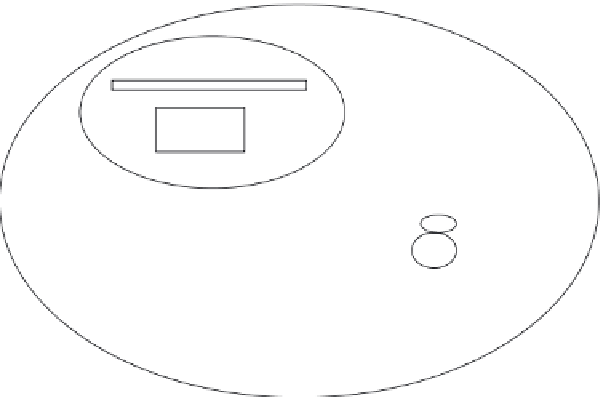Biology Reference
In-Depth Information
A
C
Coding region
B
D
FIGURE 11-3.
A simplified diagram of a gene. The rectangular bar represents a piece of DNA, with A, B, and C
representing sites for the binding of transcription factors, and D representing the beginning of the
DNA to be transcribed into mRNA. The mRNA would continue to the right through the coding
region, which contains the information necessary to make the protein.
A gene is simply a section of the DNA that has all of the information
necessary to assemble the desired protein (see Figure 11-3).
Because the DNA is found in the nucleus, and protein synthesis occurs
on ribosomes found in the cytoplasm (see Figure 11-4), an intermediary
is needed to carry the information from the DNA to the ribosome. The
molecule responsible for this information transfer is the messenger
RNA (mRNA). The mRNA is made by copying the gene through the
action of the enzyme RNA polymerase in a process called transcription.
The proteins that bind to DNA and control the process of transcription
are called transcription factors. In transcription, the RNA is produced,
base by base, according to the sequence of the gene, and it carries the
same information content as the gene. The mRNA then passes out
through pores in the nuclear envelope to bind to the ribosomes
(see Figure 11-5). Then, in the process of translation, the information
encoded in the base sequence of the mRNA is used to assemble
a protein.
DNA
Ribosome
Nucleus
Cytoplasm
FIGURE 11-4.
A simplified diagram of a eukaryotic cell. Genes are made of DNA, found in the nucleus. Proteins are
made on the ribosomes that are found in the cytoplasm.




























